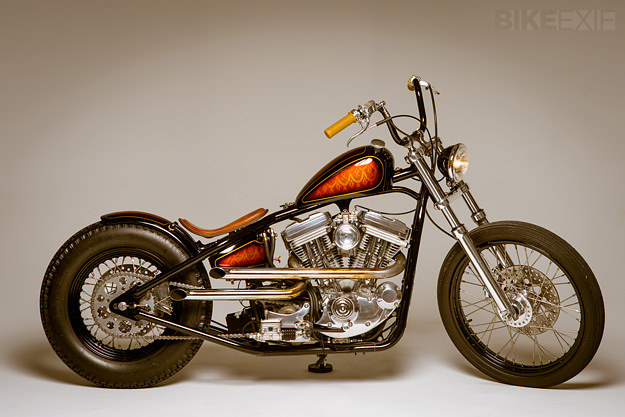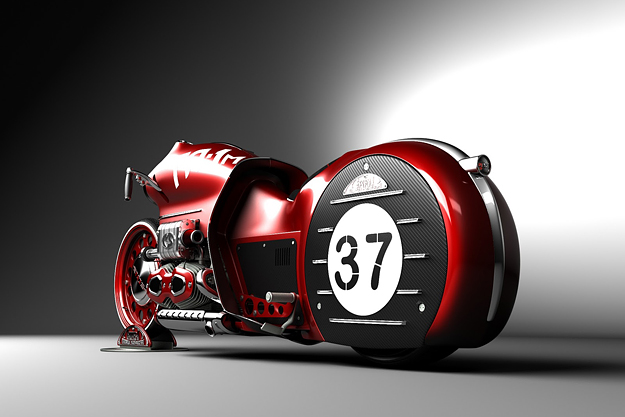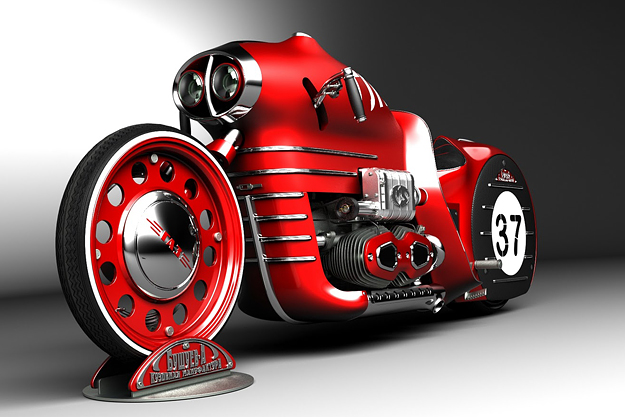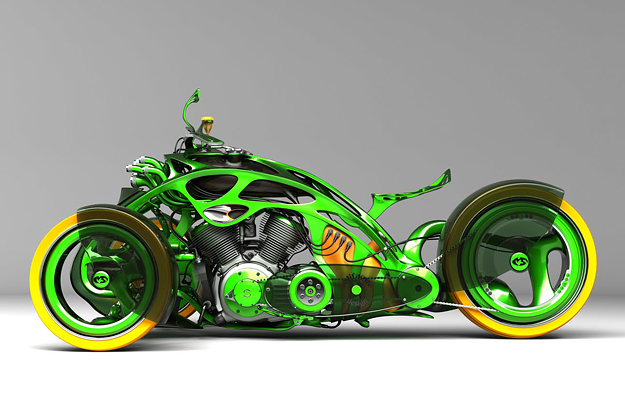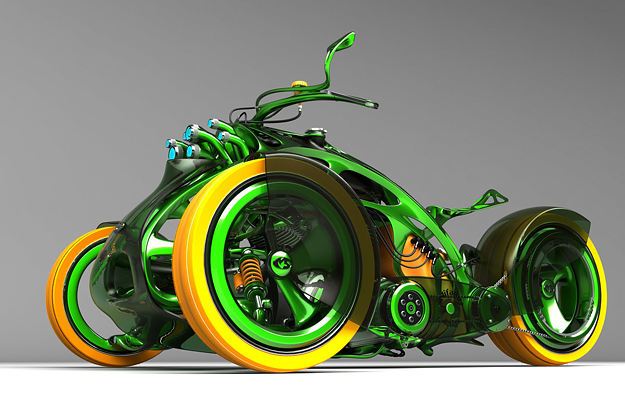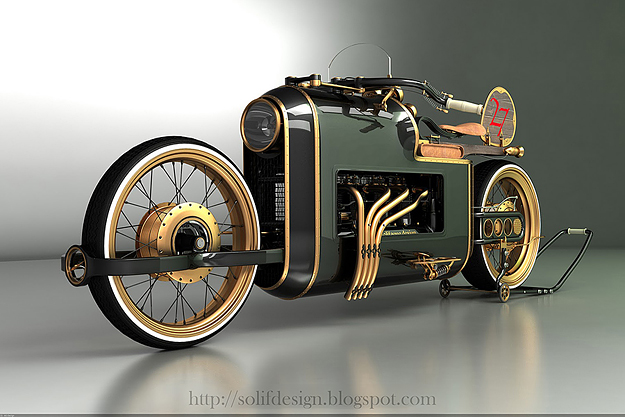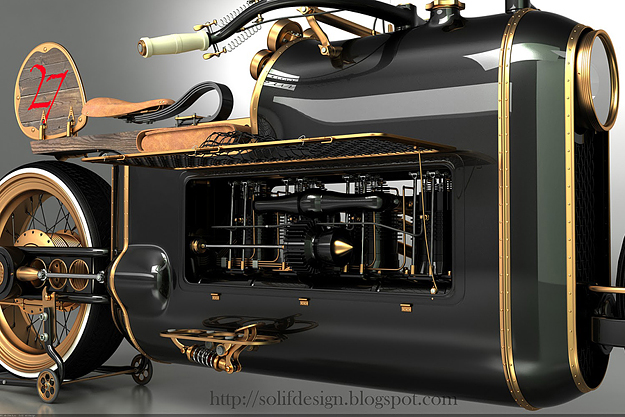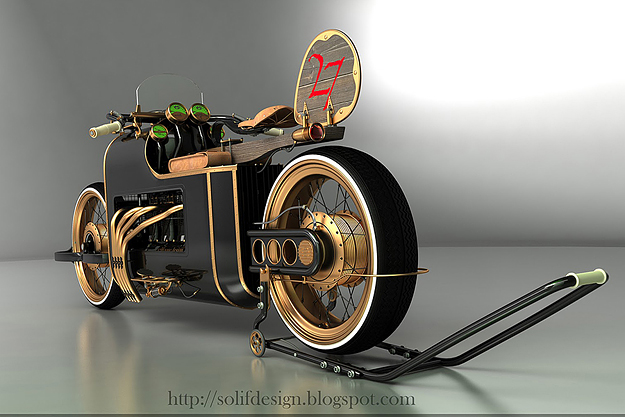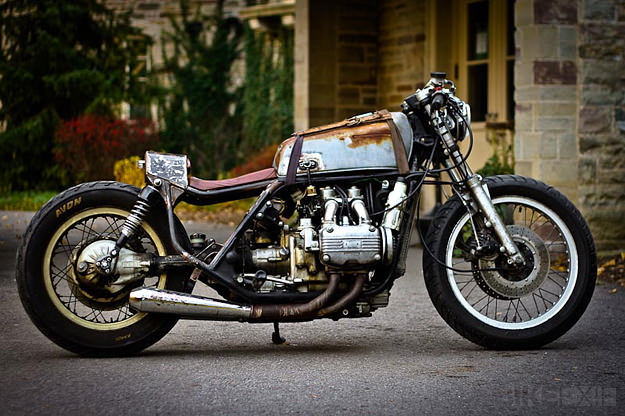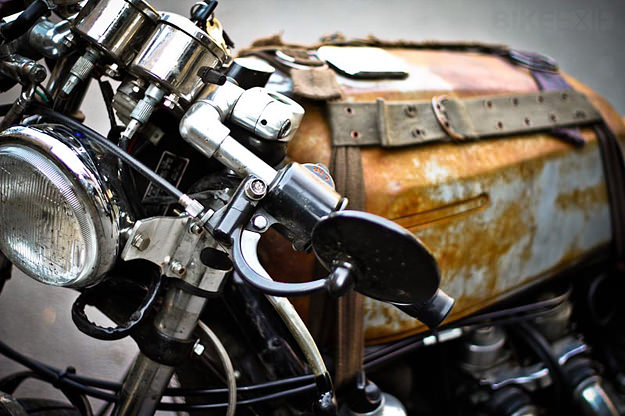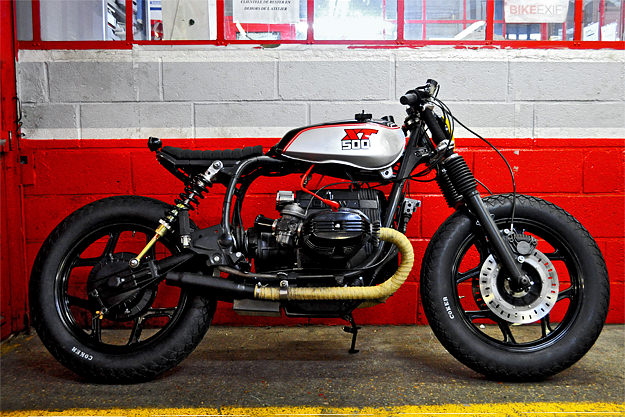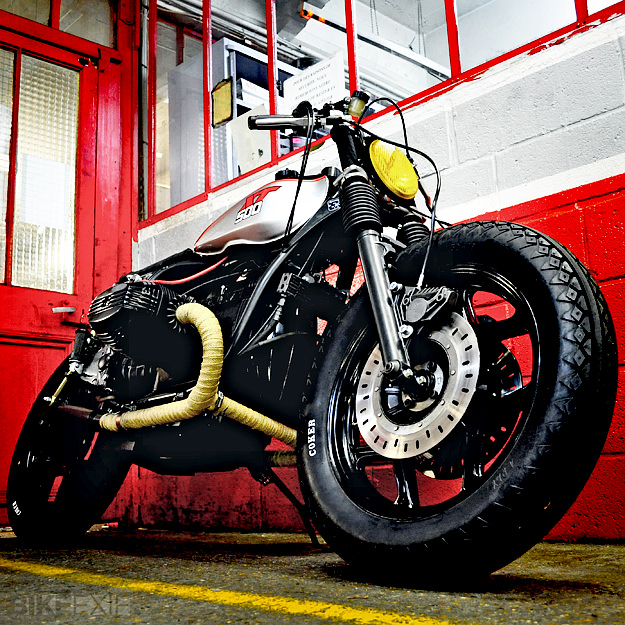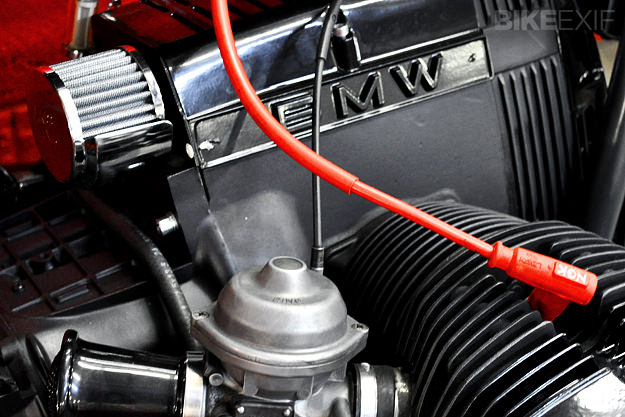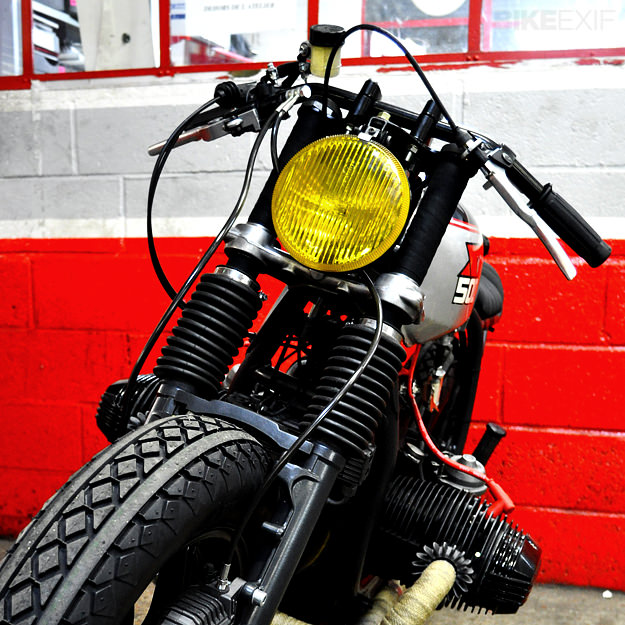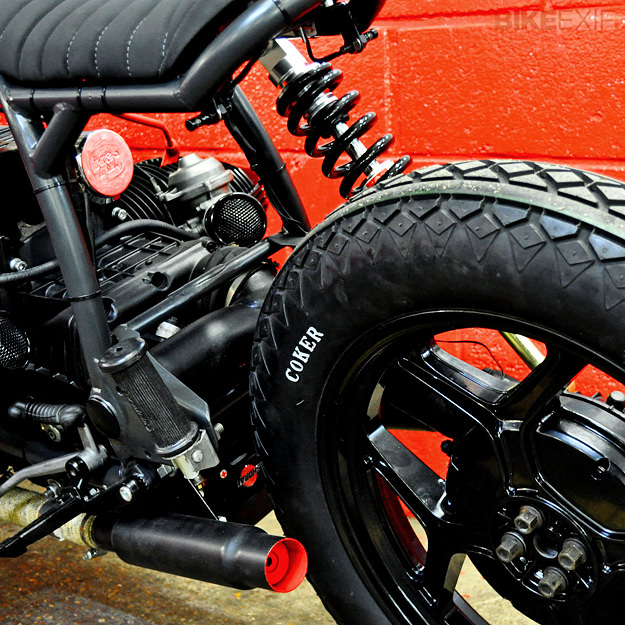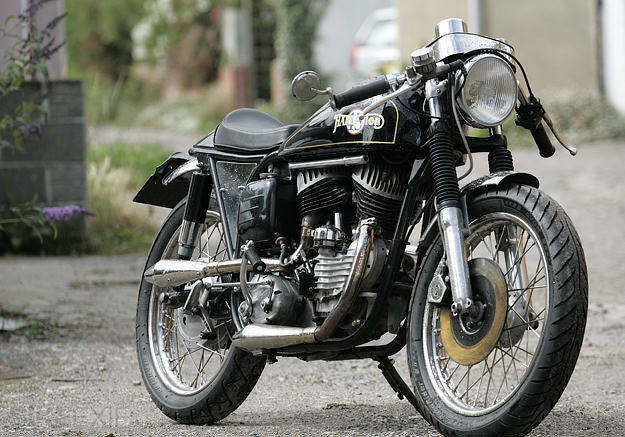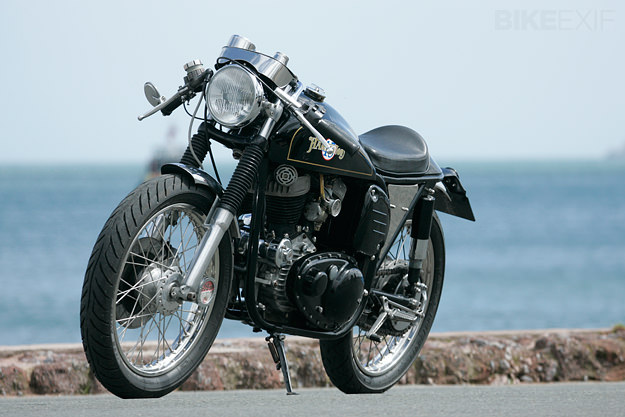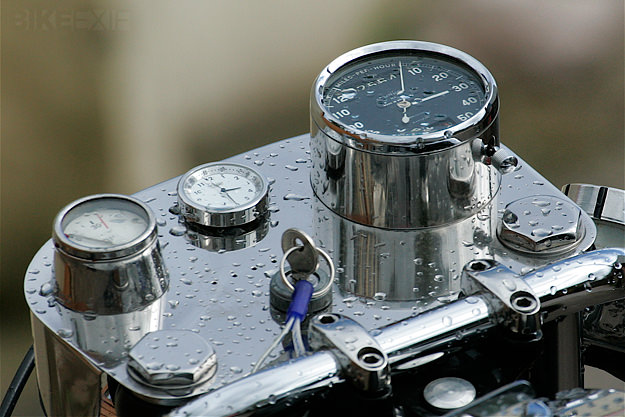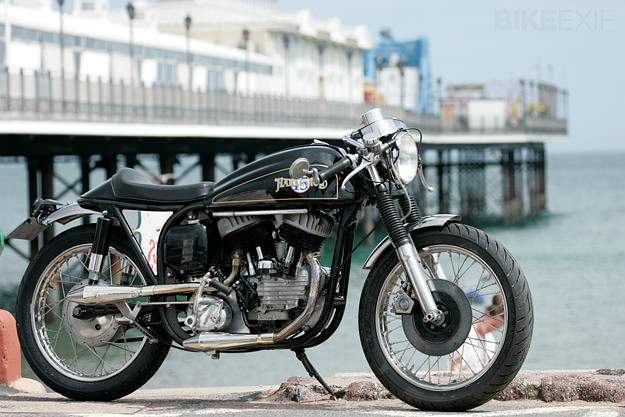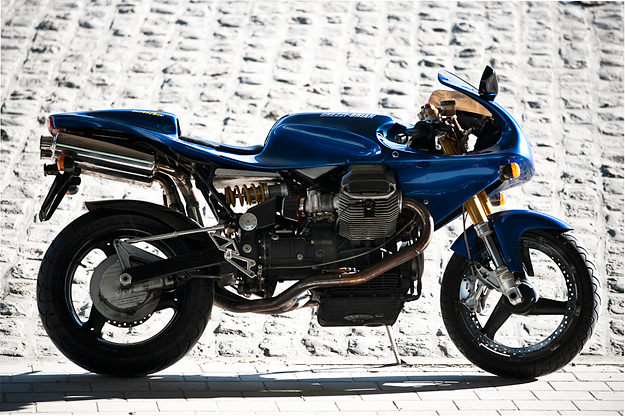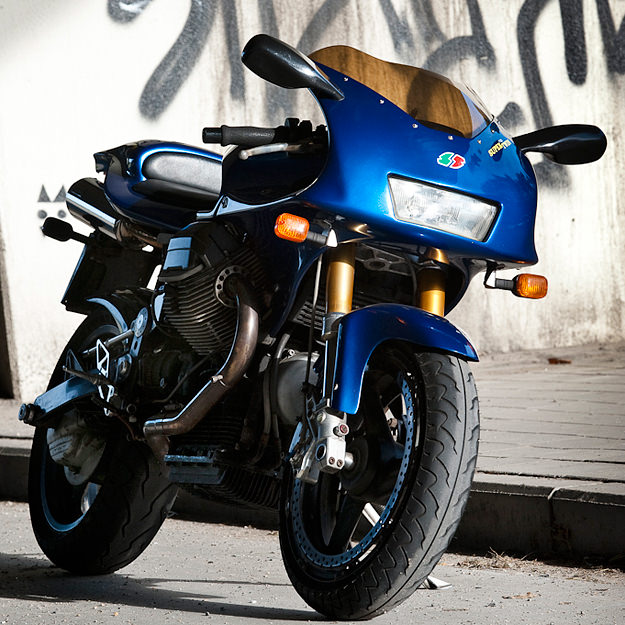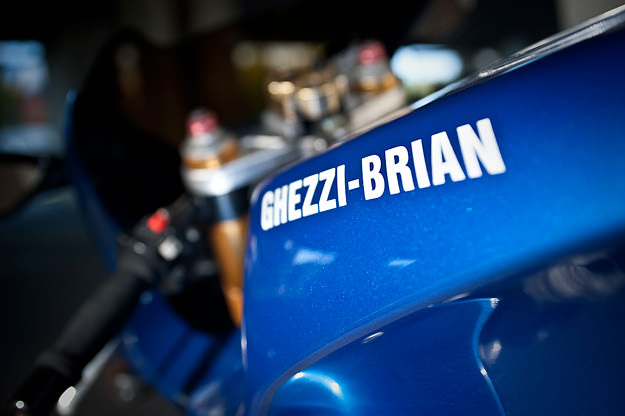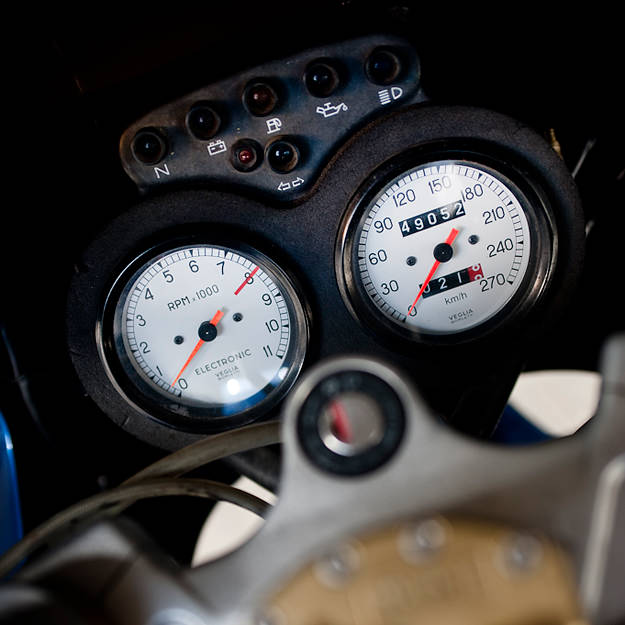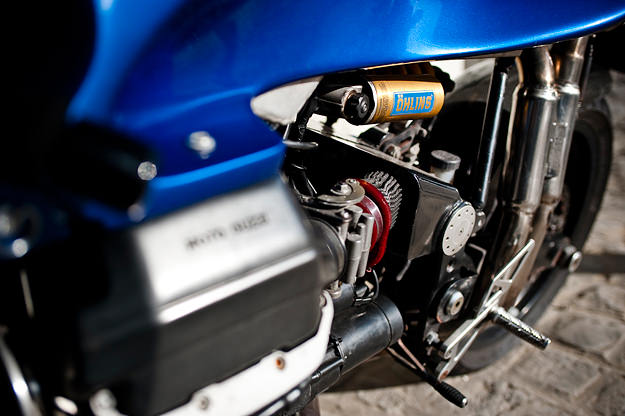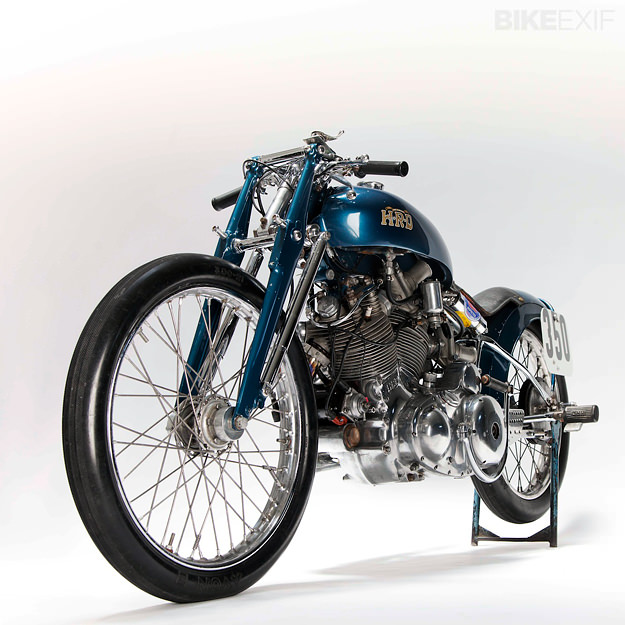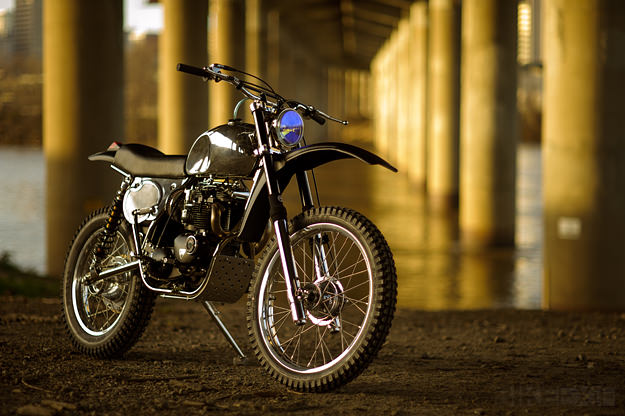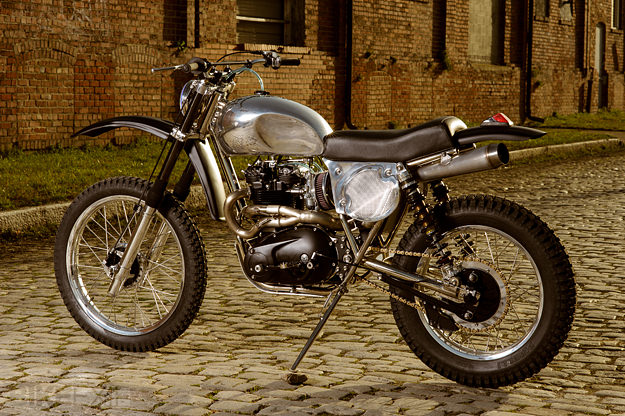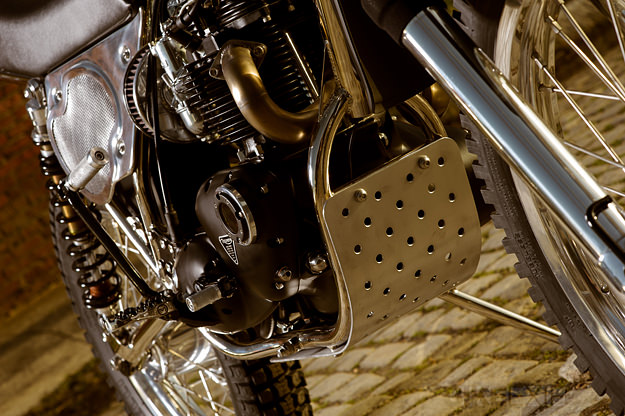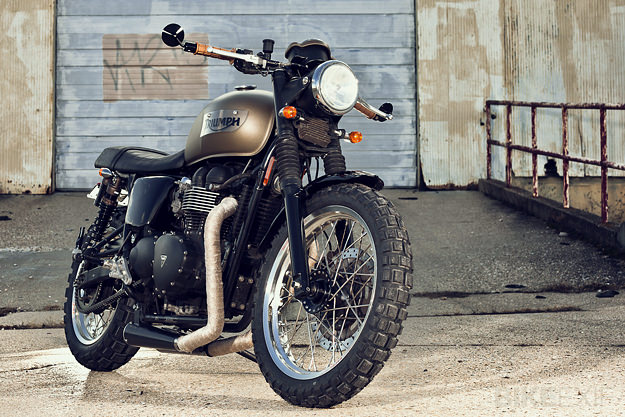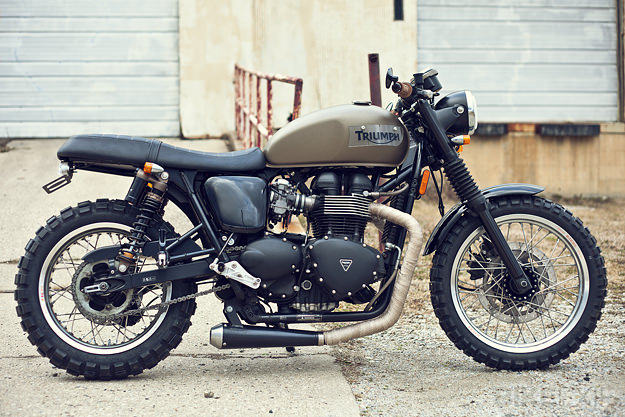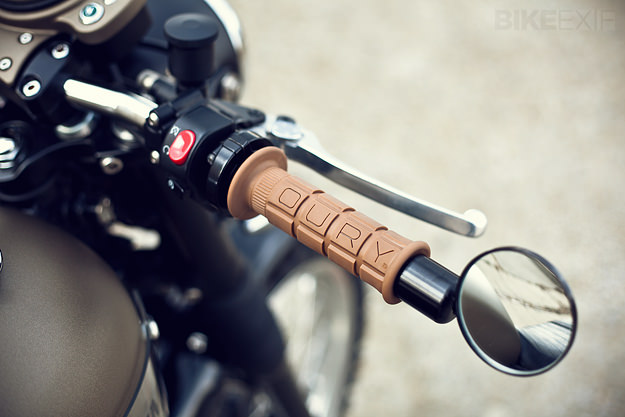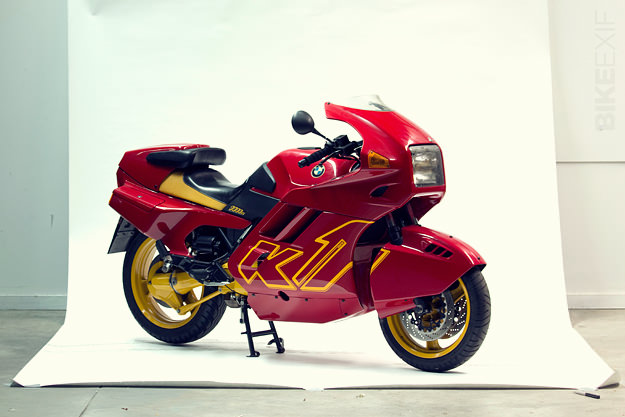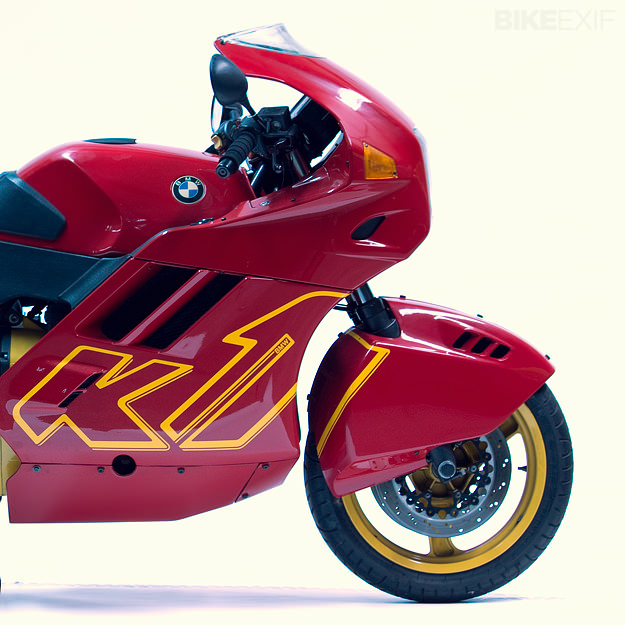
Old Empire Motorcycles, despite the magnificent name, is one of England’s newer custom builders. The Norfolk-based company, led by Alec Sharp, creates hand-made bikes with a strong bobber influence and a proudly Made In Britain ethos.
This is OEM’s first commission-built motorcycle, the EFI. It’s based on a 2009 Royal Enfield Bullet Electra, a machine which can trace its roots back to the days when England had a thriving motorcycle industry. “We were approached by a customer in late 2012 with an idea inspired by a bike from the very talented Rajputana Customs in India,” says Alec. “It was a fine looking motorcycle but there were a few details which we thought we could improve on.”

The stance and look had to be out-and-out bobber, and the customer wanted a ‘chunky’ looking bike. The stock Bullet Electra has rather large 19” wheels, so OEM fitted British-made chrome 16” rims with stainless spokes, shod with Avon Safety Mileage Mk II rubber in a classic block pattern.
“We decided on a USD front end to keep the squat chunky look,” says Alec, “and lowered the rear end with a new set of Hagon shocks. A new double-tubed swing arm was fabricated, wider than stock but the same length. It was important to keep things compact and not ‘stretch’ the bike out.”

The motor has been boosted with a carb conversion kit from Hitchcocks Motorcycles: it includes a 32mm Amal MK1 Concentric carburettor and filter, ignition box, magneto flywheel and extractor. OEM has also fitted a custom-made chromed ‘shorty’ pipe with internal baffles.
New tinware was then fabricated; a Harley Sportster tank was modified to fit and scalloped for looks, with twin pop-up fillers added. The fenders are Wassel-ribbed with hand made struts. The rear portion of the frame was modified to fit the custom seat pan and mountings, and up front, the new clip-ons units were fitted with custom microswitch housings and controls wrapped in Brooks’ finest leather.

The customer wanted a foot-forward riding position, so OEM designed a detachable unit that enables the Royal Enfield frame to accommodate foot controls with custom stainless linkages. The electrics have been revised too, with the mass of wires from the essentials (as well as a clever box of tricks that works the microswitches) now housed in the dummy oil tank.

“We’re very pleased with the build,” says Alec. “It showcases the adaptability of the Royal Enfield EFI motorcycle. And it’s the first opportunity we’ve had to make patterns for specific components.” If you own a Royal Enfield, keep an eye out for those parts (and new builds) on the Old Empire Motorcycles website and Facebook page.
